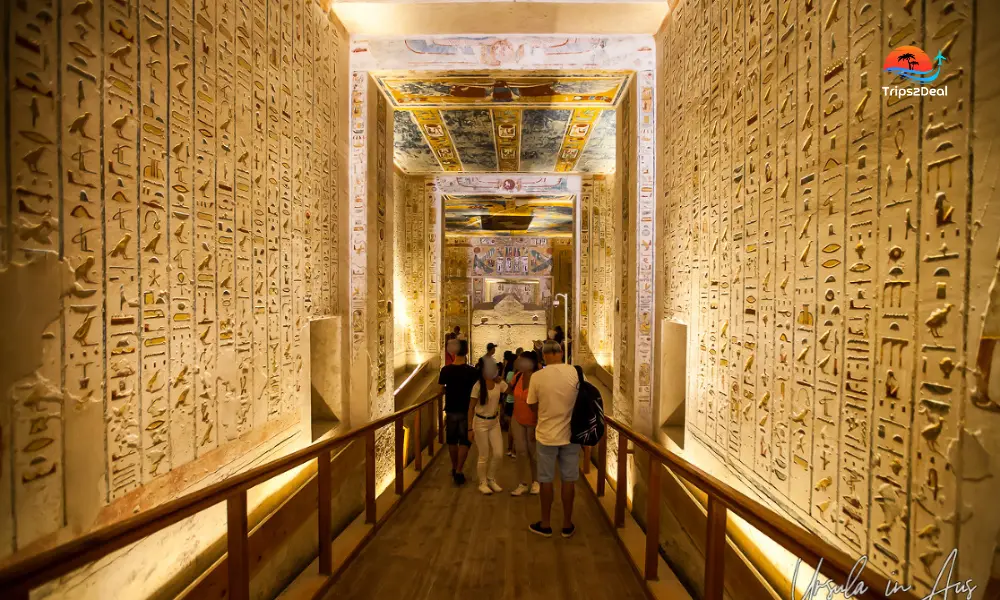Blogs

Ramses IV Tomb
The tomb is located under the arid cliffs of the Valley of kings in Luxor, discovered by Edward Ayrton between 1905 and 1906. His tomb provides a final flourish of the New Kingdom and shows a testament to ambition and grandeur. The tomb of Ramses IV is named KV2. Let’s explore its architecture, art and restoration history.
Brief Description of Valley of Kings
This valley is located on the west bank of the Nile river and opposite to Luxor which serves as a sacred necropolis. It was a burial site for the pharaohs and the officials during the new Kingdom. This valley has numerous tombs that are under the rocky hills in order to protect them from tomb robbers. These tombs were filled with treasures and inscriptions that helped them afterlife. Ramses IV tomb is also one from these that show the example of the funerary tradition of ancient Egyptians.
Ramses IV Life and Reign
During the twentieth dynasty, Ramses IV was a fifth pharaoh who ruled almost 6 years. He was a son of Ramses III who became king during the political complexities and economic challenges period. Although he ruled for a short time he initiated building projects and did many reforms in religious areas. But his projects become constrained due to the limited resources.
KV2 in Valley of Kings
The tomb of Ramses IV was named as KV12 in the valley of kings which is located near the entrance of the valley. Although, his tomb was accessible as well during the Roman-Greco period. The tomb has a simple structure with smoothly descending corridors which leads you towards the burial chamber. An elegant layout but simple relative to other tombs.
Architecture and layout of tomb
Tomb has a short corridor which represents a simple layout relative to other tombs' complex structures. The short corridor leads toward the decorated side chambers and a large burial hall at the end. The layout is linear that makes it easily accessible and visible. The burial chamber walls have religious text and astronomical scenes on the ceiling that also seems in other tombs as well.

Art & Choreography symbolism
Sacred text from the different books such as Book of Gates, the Book of Caverns, and the Book of the Dead is carved on the walls. These inscriptions present the journey of the afterlife of Sun god Ra. The striking celestial map at the ceiling shows the importance of the astronomical spiritual beliefs of Egyptians.
Efforts for the Preservation and Restoration
As, this tomb is easily accessible and has significant historical value due to which a large number of tourists visit this tomb in the valley of kings. So, to preserve its values the modern conservation techniques have been used by the Egyptian Ministry of Antiquities along with collaboration of international organizations. They continuously monitor the condition of tombs in order for better preservation of history such as stabilizing the walls of the tomb, paintwork inside the tomb and managing the humidity levels caused by tourists.
What makes KV2 unique ?
The most unique feature of the tomb is its astronomical artwork on ceilings which invites a large number of theories to propose about ancient Egyptian astronomical beliefs. Its extensive accessibility and linear layout also make it safe from heavy looting. Unlike some other tombs, this Ramses IV tomb is not damaged and opens completely which attracts scholars and casual visitors as well.

This tomb entrance is included in the standard ticket of Valley of Kings which provides a portal to the visitors to experience the ancient cultures and religious beliefs. You can walk in the footsteps of pharaohs and kings. Comfortable shoes, hats and glasses can enhance your visit.





